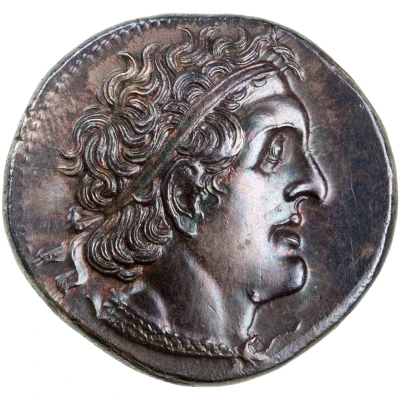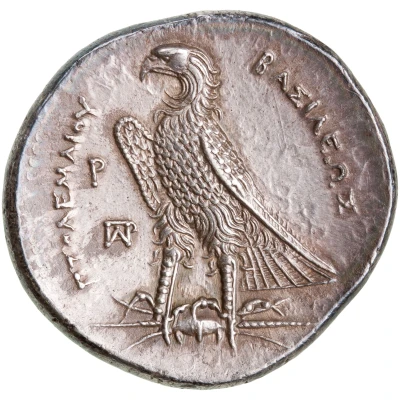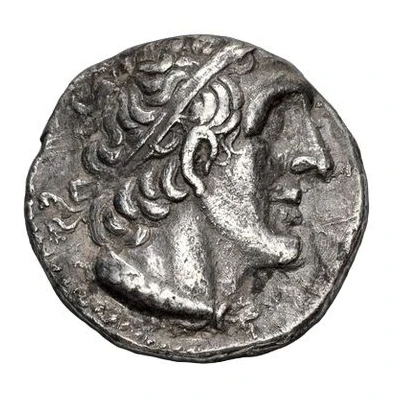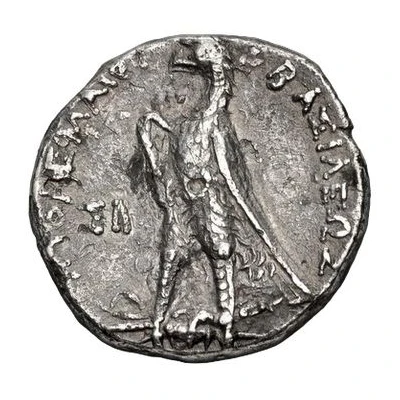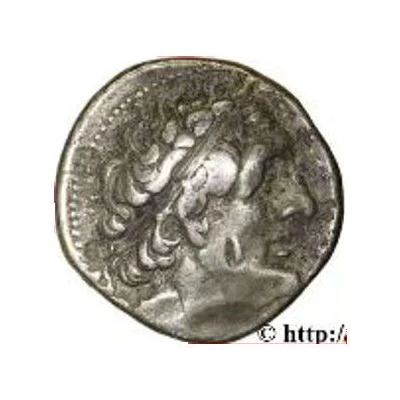
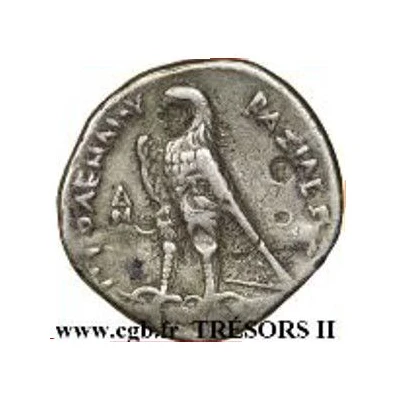

© CGB
Tetradrachm - Ptolemy I Soter Alexandria 294 BC - 282 BC
| Silver | 14.3 g | 26.5 mm |
| Issuer | Ptolemaic Kingdom (Ptolemaic Kingdom (305 BC - 30 BC)) |
|---|---|
| King | Ptolemy I Soter (305 BC - 282 BC) |
| Type | Standard circulation coin |
| Years | 294 BC - 282 BC |
| Value | Tetradrachm (4) |
| Currency | Ptolemaic drachm (second reform of Ptolemy I Soter, circa 294 – 272 BC) |
| Composition | Silver |
| Weight | 14.3 g |
| Diameter | 26.5 mm |
| Shape | Round (irregular) |
| Technique | Hammered |
| Orientation | Variable alignment ↺ |
| Demonetized | Yes |
| Updated | 2024-10-10 |
| Numista | N#22269 |
|---|---|
| Rarity index | 85% |
Reverse
Eagle, standing left, on thunderbolt
Script: Greek
Lettering:
ΠΤΟΛΕΜΑΙOΥ ΒΑΣΙΛΕΩΣ
Δ
Μ
Translation: King Ptolemy
Edge
Rough
Comment
from: https://www.acsearch.info/search.html?id=8446835In a curl of hair behind his ear is a tiny Greek letter Δ, or delta. This has been identified by Zervos and Hazard as the furtive signature of a singularly talented die engraver. However, according to Cathy Lorber in Coins of the Ptolemaic Empire (New York, 2018), the long span of time over which the delta appears, and the enormous number of dies that feature it, makes this unlikely: "It is more plausible that the letter Δ and other similar cryptic marks served some internal control function. They could, for example, designate die engraving workshops within the mint, or private contractors who provided dies to the mint, or the approval of an administrator." (CPE vol. 1, p. 37)
Interesting fact
One interesting fact about the Tetradrachm coin of Ptolemy I Soter is that it features the image of a horned god, believed to be Ammon, on the obverse (front side), which was a departure from the traditional Greek depiction of deities. This suggests that the Ptolemaic Kingdom was open to incorporating Egyptian religious symbols and deities into their coinage, reflecting the cultural exchange and blending that occurred during the Hellenistic period.
